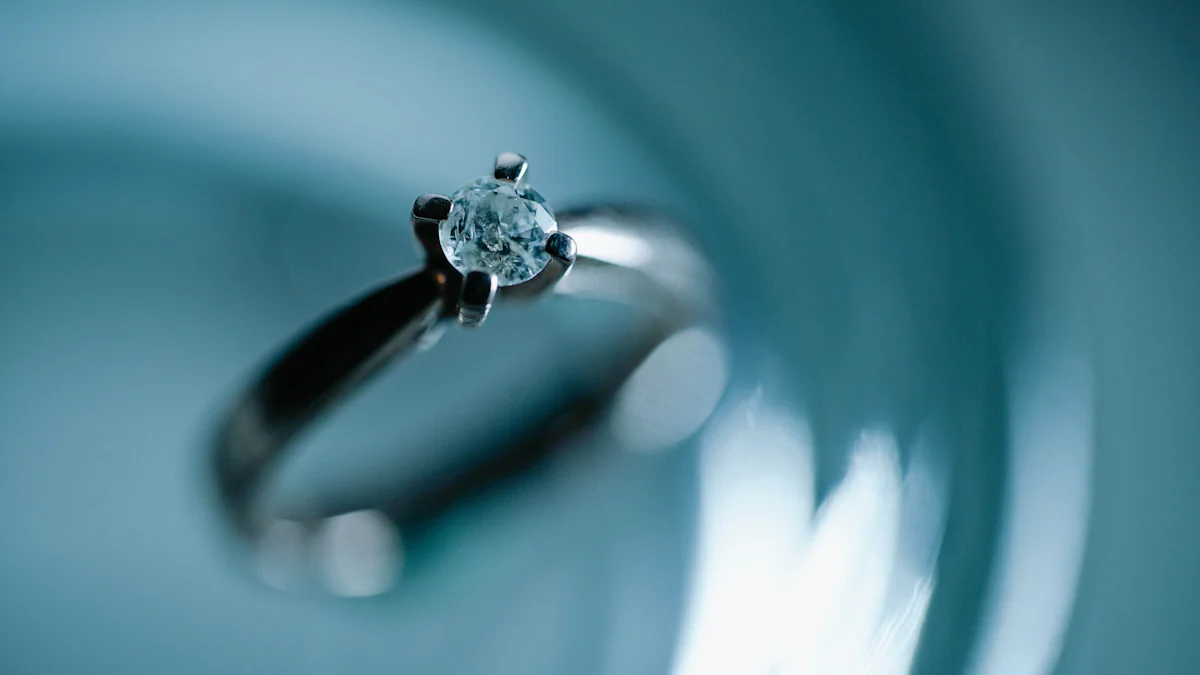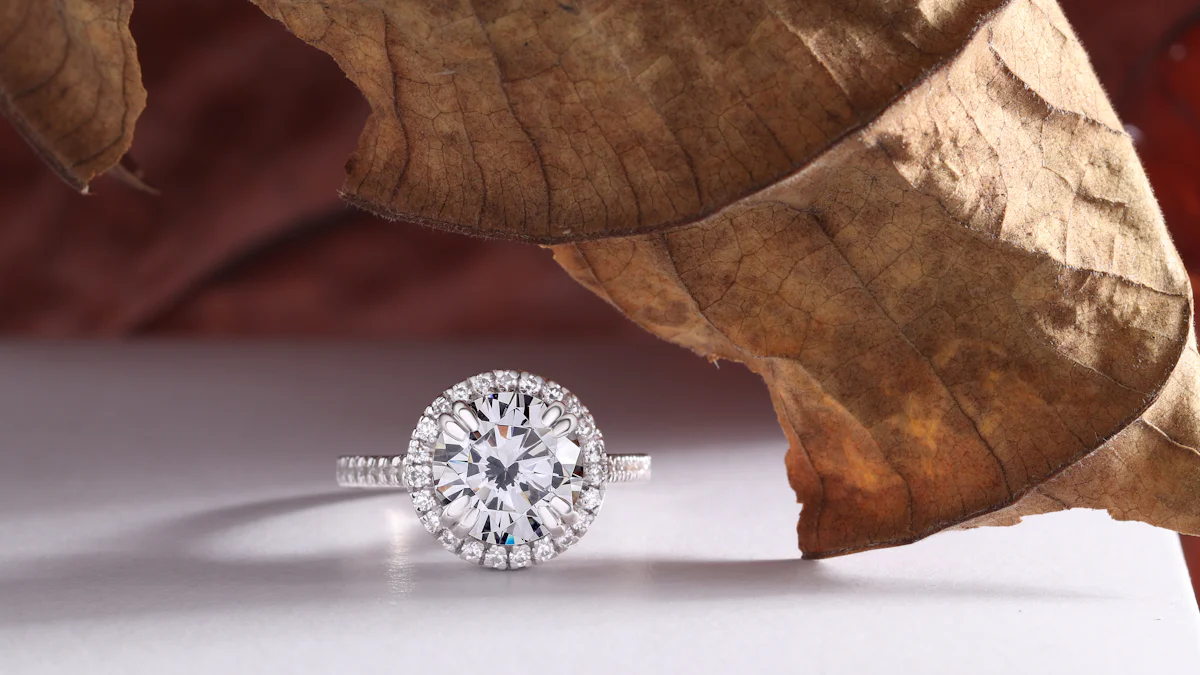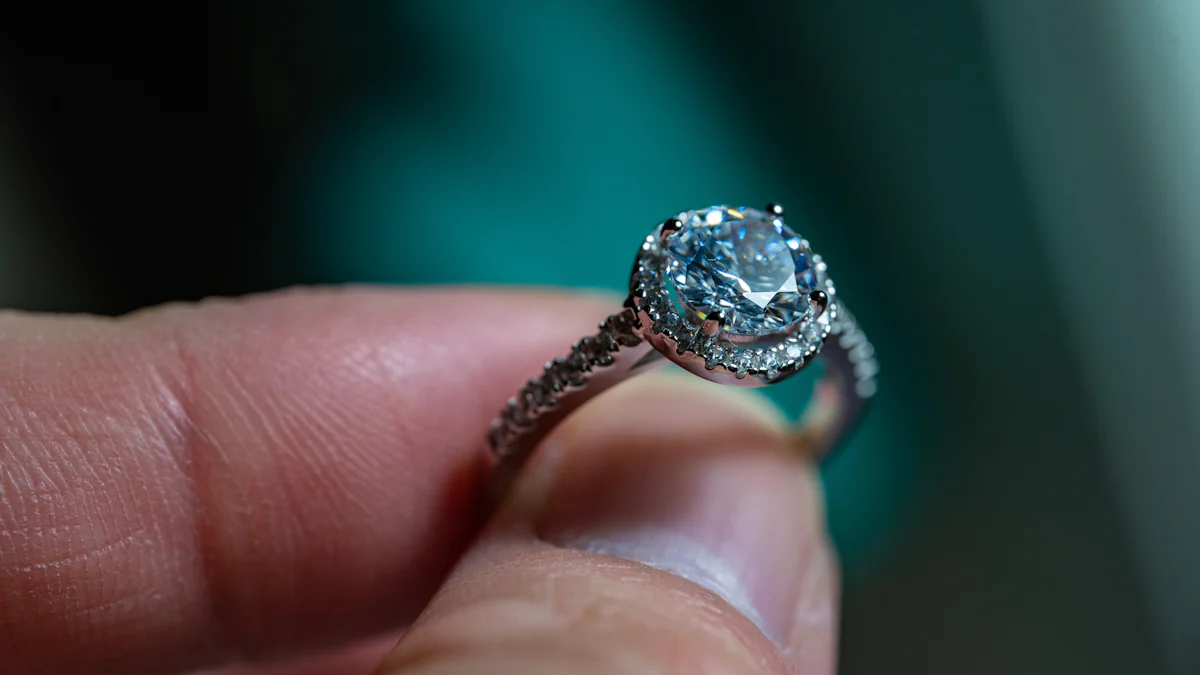1.25 Carat Diamond Ring: Key Facts You Need

A 1.25 carat diamond ring stands out for its perfect blend of size and elegance. You might wonder why this specific carat weight is so special. Well, it offers a noticeable presence without being too extravagant. Many people find it ideal for engagement rings because it balances size and price effectively. This carat weight falls within the most popular range for engagement rings, making it a sought-after choice. When you choose a 1.25 carat diamond, you get a piece that feels substantial and looks stunning on any finger.
Understanding Carat Weight
When you hear about a 1.25 carat diamond ring, you might wonder what that actually means. Let's break it down.
What Does 1.25 Carats Mean?
A carat is a unit of weight used to measure diamonds and other gemstones. Specifically, one carat equals 0.2 grams. So, a 1.25 carat diamond weighs 0.25 grams or 250 milligrams. This weight gives the diamond a substantial feel, making it a popular choice for those who want a noticeable yet elegant piece of jewelry.
How Carat Weight Affects Size and Appearance
Carat weight doesn't just affect how heavy a diamond feels; it also influences its size and appearance. A 1.25 carat diamond ring often appears larger than a one-carat diamond, providing more visual impact. However, the actual size can vary depending on the diamond's cut. For instance, a well-cut diamond will reflect light beautifully, enhancing its brilliance and making it look even more impressive.
When you choose a 1.25 carat diamond, you're opting for a ring that offers a perfect balance between size and elegance. It stands out on the finger without being overwhelming, making it an excellent choice for engagement rings or special occasions.
Price Factors
When you're considering a 1.25 carat diamond ring, understanding the price factors is crucial. Let's dive into what influences the cost of these stunning gems.
The Four Cs: Cut, Color, Clarity, and Carat
The price of a diamond largely depends on the Four Cs: Cut, Color, Clarity, and Carat. Each of these factors plays a significant role in determining the value of a diamond.
- Cut: This refers to how well the diamond has been shaped and faceted. A well-cut diamond reflects light beautifully, enhancing its sparkle and brilliance.
- Color: Diamonds come in a range of colors, from colorless to shades of yellow or brown. The less color a diamond has, the higher its value.
- Clarity: This measures the presence of internal or external flaws, known as inclusions and blemishes. Fewer imperfections mean a higher clarity grade and a more valuable diamond.
- Carat: This is the weight of the diamond. A 1.25 carat diamond is larger than a one-carat diamond, which often makes it more desirable and expensive.
How Each Factor Influences Price
Each of the Four Cs affects the price differently. A diamond with an excellent cut will usually cost more because it maximizes the stone's brilliance. Colorless diamonds are rarer and thus more expensive. High clarity grades also increase the price, as flawless diamonds are rare. Finally, the carat weight directly impacts the price; larger diamonds are rarer and more valuable.
For a 1.25 carat diamond, prices can range significantly. You might find options from as low as $1,900 to as high as $41,000. The median price hovers around $6,200, depending on the quality of the Four Cs.
Market Trends and Pricing for 1.25 Carat Diamonds
Market trends can also influence the price of a 1.25 carat diamond ring. Demand for certain shapes or settings can drive prices up. For instance, round diamonds often command higher prices due to their popularity and the complexity of their cut. Additionally, economic factors and consumer preferences can shift, affecting diamond prices over time.
When shopping for a 1.25 carat diamond ring, keep these factors in mind. Understanding the Four Cs and market trends will help you make an informed decision and find a diamond that fits your budget and style.
Visual Impact

When you choose a 1.25 carat diamond ring, its visual impact can vary based on several factors. Let's explore how different settings and finger sizes can influence the appearance of your diamond.
How a 1.25 Carat Diamond Looks on Different Ring Settings
The setting of your ring plays a crucial role in showcasing your diamond. Here are some popular settings and how they affect the look of a 1.25 carat diamond:
-
Solitaire Setting: This classic choice highlights the diamond as the centerpiece. The simplicity of the band draws all attention to the diamond, making it appear larger and more prominent.
-
Halo Setting: A halo of smaller diamonds surrounds the central stone, adding extra sparkle. This setting can make your 1.25 carat diamond look even bigger and more dazzling.
-
Three-Stone Setting: Featuring two smaller diamonds flanking the center stone, this setting symbolizes the past, present, and future. It adds depth and dimension, enhancing the overall brilliance of the ring.
-
Pavé Setting: Tiny diamonds encrust the band, creating a continuous sparkle. This setting complements the central diamond, giving it a more luxurious appearance.
Each setting offers a unique way to present your diamond, allowing you to choose one that matches your style and enhances the diamond's beauty.
The Effect of Finger Size on Visual Appearance
Your finger size can also affect how a 1.25 carat diamond ring looks. Here's how:
-
Smaller Fingers: On smaller fingers, a 1.25 carat diamond can appear larger and more striking. The diamond covers more surface area, making it a standout piece.
-
Larger Fingers: On larger fingers, the diamond may seem more proportionate. It offers a balanced look without overwhelming the hand.
Consider trying on different rings to see how the diamond looks on your finger. This helps you find a ring that feels comfortable and looks stunning.
Choosing a 1.25 carat diamond ring involves considering both the setting and your finger size. These factors together create a visual impact that reflects your personal style and enhances the diamond's natural beauty.
Comparison with Other Sizes

Choosing the right diamond size can be a bit tricky. Let's compare a 1.25 carat diamond with other popular sizes to help you make an informed decision.
1.25 Carats vs. 1 Carat Diamonds
When you compare a 1.25 carat diamond ring to a 1 carat diamond, you'll notice a visible difference. The 1.25 carat diamond offers more presence and sparkle. It weighs more, which gives it a slightly larger appearance. This extra weight can make a big difference in how the diamond looks on your finger.
In terms of cost, a 1.25 carat diamond can be more expensive. Prices range from $1,900 to $41,000, depending on the quality of the Four Cs: Cut, Color, Clarity, and Carat. The median price is around $6,200. This means you might pay more for that extra sparkle, but many find it worth the investment for the added visual impact.
1.25 Carats vs. 1.5 Carat Diamonds
Now, let's look at how a 1.25 carat diamond compares to a 1.5 carat diamond. The 1.5 carat diamond is larger and often more eye-catching. It provides even more brilliance and can be a real showstopper. However, this size also comes with a higher price tag.
The jump from 1.25 to 1.5 carats can significantly increase the cost. Larger diamonds are rarer, which makes them more valuable. If you're considering a 1.5 carat diamond, be prepared for a higher investment. But if you're looking for a balance between size and cost, the 1.25 carat diamond might be the sweet spot.
Buying Tips
When you're ready to buy a 1.25 carat diamond ring, knowing what to look for can make all the difference. Here are some tips to guide you through the process.
What to Look for in a 1.25 Carat Diamond Ring
First, focus on the Four Cs: Cut, Color, Clarity, and Carat. These factors determine the diamond's quality and value. Choose a cut that maximizes brilliance. A well-cut diamond sparkles more and looks stunning. For color, aim for a diamond that appears colorless to the naked eye. This ensures a classic and timeless look. Clarity matters too. Look for a diamond with minimal inclusions or blemishes. This enhances its beauty and value.
Consider the setting as well. The right setting can enhance the diamond's appearance. Popular choices include solitaire, halo, and pavé settings. Each offers a unique way to showcase your diamond. Also, think about the metal type. Options like white gold, yellow gold, and platinum can complement the diamond beautifully.
Questions to Ask Your Jeweler
When you visit a jeweler, ask questions to ensure you're making an informed purchase. Here are some important ones:
- What is the diamond's grade for each of the Four Cs?
- Can you provide a certificate from a reputable grading laboratory?
- What is the return policy if I'm not satisfied with the ring?
- Are there any warranties or guarantees on the diamond or setting?
- Can you show me how the diamond looks in different lighting conditions?
These questions help you understand the diamond's quality and the jeweler's policies. They also give you peace of mind about your purchase.
Certification and Authenticity
Always verify the diamond's authenticity with a certification. Reputable grading laboratories, like the Gemological Institute of America (GIA) or the American Gem Society (AGS), provide detailed reports. These reports confirm the diamond's characteristics and quality. A certified diamond ensures you're getting what you pay for.
Check the certification number engraved on the diamond. This number should match the one on the report. It adds an extra layer of security and authenticity to your purchase.
By following these buying tips, you can confidently choose a 1.25 carat diamond ring that suits your style and budget. Remember, a well-informed decision leads to a beautiful and cherished piece of jewelry.
In wrapping up, a 1.25 carat diamond ring offers a perfect blend of size, elegance, and value. You've learned how the Four Cs—Cut, Color, Clarity, and Carat—play a crucial role in determining the diamond's quality and price. Remember, focusing on the overall look rather than just carat weight can lead to a more satisfying purchase. By considering your budget, style, and preferences, you can make an informed decision. Always prioritize quality and authenticity to ensure your diamond ring becomes a cherished piece of jewelry.
FAQ
What makes 1.25 carat diamond rings popular for engagement?
1.25 carat diamond rings strike a perfect balance between size and price, making them a popular choice for engagements. They offer a noticeable presence without being overly extravagant, providing a stunning look that many find ideal for such a special occasion.
Are there different types of 1.25 carat diamond rings available?
Absolutely! You can find various types of 1.25 carat diamond rings, such as the 1.25 Carat VS1 Diamond and the 1.25 Carat VS2 Diamond. These variations refer to the clarity grade of the diamond, with VS1 and VS2 indicating very slight inclusions that are difficult to see even under magnification.
Where can I find a complete 1.25 carat diamond engagement ring?
You can explore a wide selection of complete 1.25 carat diamond engagement rings at reputable jewelers like Reis Nichols. They offer a variety of styles and settings to suit your personal taste and budget.
How does the setting affect the appearance of a 1.25 carat diamond ring?
The setting plays a crucial role in how your diamond appears. For instance, a solitaire setting highlights the diamond as the centerpiece, while a halo setting surrounds it with smaller diamonds, enhancing its sparkle. Each setting offers a unique way to showcase your diamond's beauty.
Is a 1.25 carat diamond ring suitable for all finger sizes?
Yes, a 1.25 carat diamond ring can look stunning on any finger size. On smaller fingers, it may appear larger and more striking, while on larger fingers, it offers a balanced and proportionate look. Trying on different rings can help you find the perfect fit.
How do the Four Cs influence the price of a 1.25 carat diamond ring?
The Four Cs—Cut, Color, Clarity, and Carat—significantly impact the price. A well-cut diamond maximizes brilliance, colorless diamonds are rarer and more valuable, high clarity grades increase worth, and larger carat weights often command higher prices. Understanding these factors helps you make an informed purchase.
Can I customize a 1.25 carat diamond ring?
Many jewelers offer customization options for 1.25 carat diamond rings. You can choose the metal type, diamond shape, and setting style to create a unique piece that reflects your personal style and preferences.
Are lab-grown diamonds a good alternative for a 1.25 carat ring?
Lab-grown diamonds provide an affordable alternative without compromising quality. They offer the same brilliance and beauty as natural diamonds, making them a popular choice for those seeking value and sustainability.
Why is certification important when buying a 1.25 carat diamond ring?
Certification from a reputable grading laboratory, like the Gemological Institute of America (GIA), ensures the diamond's authenticity and quality. It provides a detailed report of the diamond's characteristics, giving you confidence in your purchase.
What questions should I ask my jeweler when buying a 1.25 carat diamond ring?
When visiting a jeweler, ask about the diamond's grade for each of the Four Cs, request a certification, inquire about the return policy, and check for warranties or guarantees. These questions help ensure you're making a well-informed decision.
See Also
Exploring Essential Elements That Influence Diamond Ring Costs
Are 1.6 Carat Diamond Rings Really Worth The Buzz?
What Is The Size Of A 2.25 Carat Diamond?

